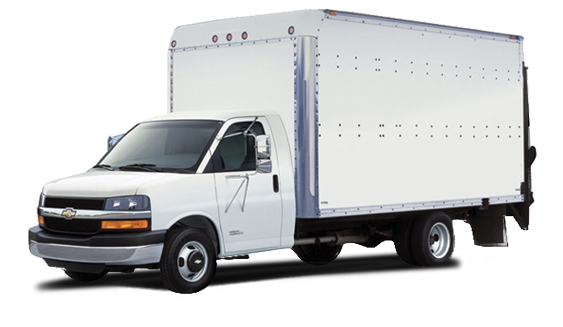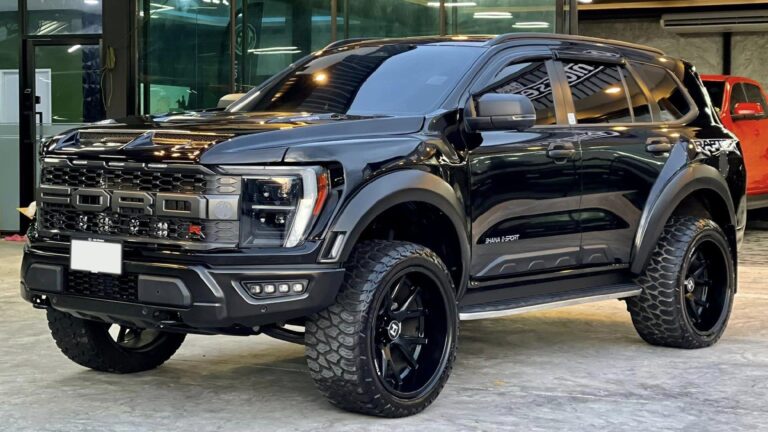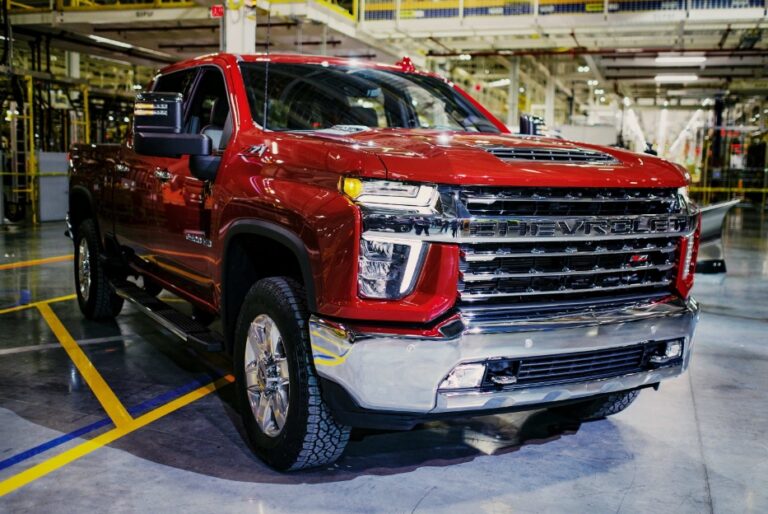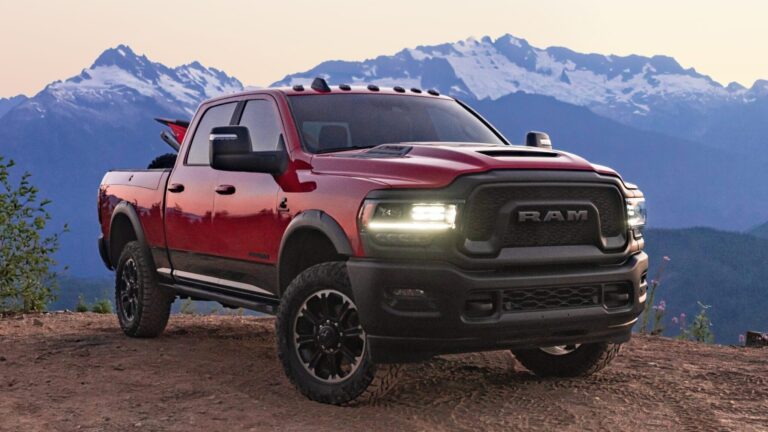The Indispensable Workhorse: A Comprehensive Guide to the Box Van
The Indispensable Workhorse: A Comprehensive Guide to the Box Van cars.truckstrend.com
In the intricate world of logistics, transportation, and commercial operations, few vehicles are as ubiquitous and essential as the Box Van. Often seen diligently navigating city streets, highways, and industrial estates, this versatile workhorse is the backbone of countless businesses, ensuring goods, equipment, and even entire households are moved safely, securely, and efficiently from point A to point B. More than just a vehicle, the box van represents a critical solution for anyone requiring high-volume, protected cargo transport, standing apart with its distinct, fixed, and fully enclosed cargo area.
From independent couriers and removal companies to large distribution networks and mobile service providers, understanding the nuances of the box van is key to optimizing operations, ensuring compliance, and maximizing profitability. This comprehensive guide will delve into every facet of the box van, from its fundamental design to practical advice for ownership and operation.
The Indispensable Workhorse: A Comprehensive Guide to the Box Van
Understanding the Box Van: Design and Core Functionality
At its heart, a box van is characterized by a separate, chassis-mounted, fully enclosed rectangular cargo body. Unlike a panel van, which is typically a single-unit construction where the cargo area is integrated into the vehicle’s original body shell, a box van features a distinct chassis-cab unit upon which a custom-built box body is affixed. This design offers several significant advantages, primarily in terms of load volume and customization.
The cargo area is typically constructed from lightweight yet durable materials such as aluminum, steel, fiberglass, or composite panels, designed to be weather-resistant and secure. Access to the cargo bay is usually via large rear doors, which can be either traditional barn doors (offering a full-width opening) or a roller shutter door (providing quick access, especially in tight spaces, though often reducing effective door height). Some box vans may also feature side access doors for added convenience. The flat, expansive sides of the box body also serve as an ideal canvas for branding and advertising, turning the vehicle into a mobile billboard.
Key Benefits of Opting for a Box Van
The distinctive design of the box van translates into a host of practical benefits that make it the preferred choice for a wide array of applications:
- Superior Cargo Protection: The fully enclosed body provides unparalleled protection against adverse weather conditions (rain, snow, sun, wind) and road debris, ensuring goods arrive in pristine condition.
- Enhanced Security: With robust locking mechanisms and no external windows into the cargo area, box vans offer excellent security against theft and tampering, crucial for valuable or sensitive shipments.
- Maximized Load Volume: The rectangular shape efficiently utilizes space, allowing for the transportation of bulkier, yet often lighter, items that might not fit in a conventional panel van. This makes them ideal for furniture, white goods, or large equipment.
- Excellent Branding Opportunity: The large, flat exterior panels provide an expansive surface for company branding, logos, and promotional messages, offering significant mobile advertising potential.
- Versatility and Customization: The modular design allows for extensive internal customization, including shelving, racking, tie-down rails, temperature control (refrigerated units), and specialized flooring, adapting the van to specific business needs.
- Load Stability: Goods can be securely stacked and restrained within the rigid confines of the box, reducing movement and potential damage during transit.
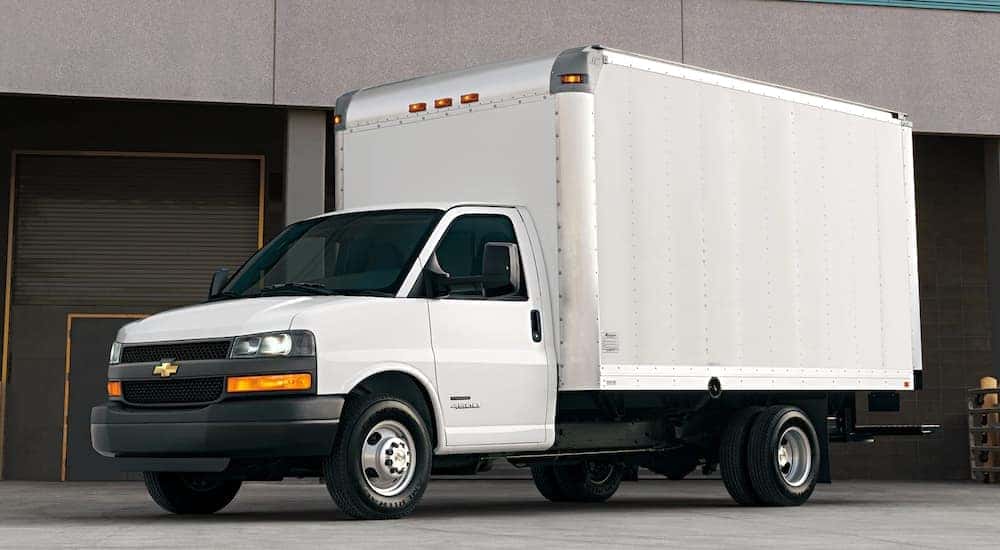

Types of Box Vans and Their Applications
Box vans come in various sizes and configurations, catering to different operational scales and specialized requirements:
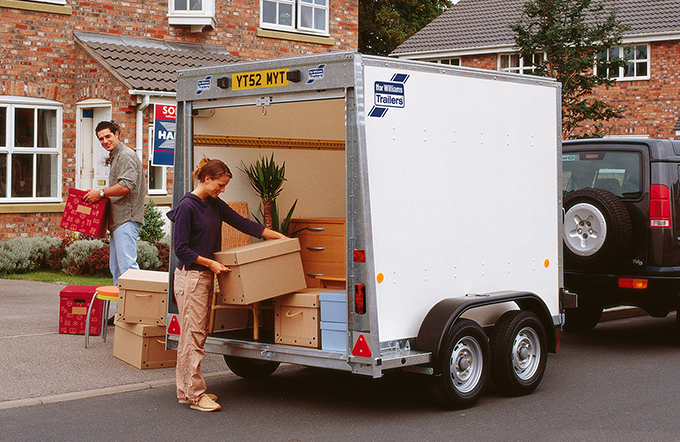
- Light Duty Box Vans (e.g., 3.5-ton GVW): These are the most common type, often based on chassis from manufacturers like Ford Transit, Mercedes Sprinter, Fiat Ducato, or VW Crafter. With a Gross Vehicle Weight (GVW) of 3,500 kg, they can typically be driven on a standard car driving license in many regions. They are ideal for local deliveries, small-to-medium removals, courier services, and tradespeople requiring significant protected storage. A popular variant in this category is the Luton Box Van, which features an extended body section over the cab, providing additional storage space, often favored by removal companies.
- Medium Duty Box Vans (e.g., 7.5-ton GVW): Stepping up in size and capacity, these vehicles require a specific commercial driving license (e.g., C1 in the UK). They are used for larger distribution routes, substantial removal jobs, and transporting heavier loads over longer distances.
- Heavy Duty Box Vans (HGV): These are much larger trucks with box bodies, often articulated (tractor unit and trailer) or rigid chassis exceeding 7.5-ton GVW. They are designed for long-haul logistics, inter-city distribution, and very high-volume cargo.
- Specialized Box Vans:
- Refrigerated/Chiller Box Vans: Equipped with insulated bodies and refrigeration units to maintain specific temperatures, essential for transporting perishable goods like food, pharmaceuticals, or flowers.
- Tail Lift Equipped Box Vans: Feature a hydraulic platform at the rear that lifts or lowers goods, significantly easing the loading and unloading of heavy or bulky items, reducing manual labor and risk of injury.
- Curtain-Side Box Vans: While still enclosed, one or both sides of the box are covered by heavy-duty curtains that can be pulled back, allowing for side loading and unloading with forklifts, ideal for palletized goods.
Choosing the Right Box Van: Important Considerations
Selecting the appropriate box van requires careful evaluation of your specific needs and operational context:
- Gross Vehicle Weight (GVW) & Payload: This is paramount. Determine the maximum weight you typically need to carry (payload) and choose a GVW rating that comfortably accommodates it, plus the vehicle’s own weight. Remember, GVW dictates license requirements.
- Load Volume & Dimensions: Measure your typical cargo. Do you need height, width, or length? Match the internal dimensions of the box body to your most frequent load profiles.
- Rear Access: Roller shutter for quick, frequent access in tight spots, or barn doors for full opening and potentially wider items?
- Tail Lift Necessity: If you frequently move heavy items (e.g., appliances, machinery, pallets), a tail lift is invaluable, despite adding to the vehicle’s unladen weight and cost.
- Engine & Fuel Type: Diesel engines are common for their torque and fuel efficiency, but consider emerging electric box vans for urban operations, lower emissions, and potential government incentives.
- New vs. Used: A new van offers warranty and the latest features but comes at a higher initial cost. A well-maintained used van can be a cost-effective alternative, but require thorough inspection.
- Internal Customization: Plan for tie-down points, shelving, lighting, and specialized flooring based on your cargo.
- Operating Costs: Factor in fuel consumption, insurance, maintenance, road tax, and depreciation.
Operating and Maintaining Your Box Van
Proper operation and diligent maintenance are crucial for the longevity, safety, and efficiency of your box van.
- Pre-Trip Checks: Before every journey, check tire pressure, fluid levels (oil, coolant, washer fluid), lights, indicators, brakes, and ensure the load is securely fastened and distributed evenly.
- Loading Techniques: Distribute weight evenly across the cargo floor, with heavier items placed low and centrally. Secure all cargo using straps, nets, or internal restraints to prevent shifting during transit, which can affect vehicle stability and braking.
- Driving Dynamics: Box vans have a higher center of gravity and are susceptible to crosswinds, especially when unladen. They also have longer braking distances and wider turning circles than cars. Drive defensively, anticipate maneuvers, and be mindful of height restrictions.
- Regular Servicing: Adhere to the manufacturer’s recommended service schedule. This includes routine oil changes, filter replacements, brake inspections, and checks of the suspension and steering systems. Pay particular attention to the tail lift (if fitted), which requires regular professional servicing for safety and functionality.
- Bodywork Care: Regularly clean the exterior to prevent dirt buildup and inspect for damage, rust, or compromised seals that could lead to water ingress. Timely repairs prevent minor issues from escalating.
- Legal Compliance: Ensure your vehicle always operates within its maximum GVW, adheres to roadworthiness regulations (e.g., MOT in the UK), and drivers hold the correct license for the vehicle’s weight category.
Challenges and Solutions
While highly advantageous, box vans do present some operational challenges:
- Limited Rear/Side Visibility: The enclosed box body restricts rear and side views.
- Solution: Install reversing cameras, larger wing mirrors, and parking sensors. Driver training should emphasize careful maneuvering.
- Maneuverability in Tight Spaces: Their larger footprint can make navigating narrow streets or crowded loading docks difficult.
- Solution: Route planning to avoid restrictive areas, driver experience, and potentially opting for a shorter wheelbase model if primary operations are urban.
- Fuel Costs: Larger vehicles generally consume more fuel.
- Solution: Optimize routes, adopt eco-driving techniques, maintain tires correctly, and consider electric box vans for compatible operations.
- Load Security: While inherently secure, improper loading can still lead to damaged goods or an unstable vehicle.
- Solution: Invest in quality load securing equipment (straps, shoring bars, nets) and train staff on proper loading and securing techniques.
- Maintenance Complexity: Specialized equipment like tail lifts requires specific maintenance.
- Solution: Use certified technicians for servicing, especially for hydraulic systems, and adhere strictly to maintenance schedules.
Practical Advice and Actionable Insights
- Calculate Accurately: Before purchasing, precisely calculate your typical cargo volume and weight to ensure you select a van with adequate payload and cubic capacity. It’s better to have a little extra than not enough.
- Consider a Tail Lift: Even if you don’t always transport heavy items, a tail lift can dramatically improve efficiency and safety, especially if you deal with diverse goods or require one-person loading/unloading.
- Invest in Load Securing: Quality straps, shoring bars, and internal rails are non-negotiable. They protect your goods and prevent damage to the van’s interior.
- Embrace Technology: Telematics systems can track vehicle location, monitor driver behavior, optimize routes, and improve fuel efficiency, offering significant long-term savings.
- Driver Training: Ensure all drivers are adequately trained, not just in driving the vehicle but also in safe loading procedures, pre-trip checks, and emergency protocols.
Box Van Estimated Price Guide
Please note that these prices are estimates and can vary significantly based on manufacturer (e.g., Ford, Mercedes, IVECO, VW, Renault, Vauxhall, Fiat), specific model, engine type, transmission, optional features (e.g., tail lift, air conditioning, navigation), new vs. used condition, mileage, age, regional taxes, and market conditions. Prices are typically in GBP (£) for the UK market but can be converted for other regions.
| Category | GVW (Gross Vehicle Weight) | New Price Range (Est.) | Used Price Range (Est. 3-5 years old) | Key Features / Considerations |
|---|---|---|---|---|
| Light Duty Box Van | Up to 3.5 tonnes | £30,000 – £60,000+ | £15,000 – £35,000 | Standard driving license (car equivalent). Popular for couriers, small removals, local deliveries. Often available as "Luton" variants (over-cab storage). Basic models may not include tail lifts. |
| Medium Duty Box Van | 7.5 tonnes | £50,000 – £90,000+ | £25,000 – £50,000 | Requires specific commercial driving license (e.g., C1 in UK). Ideal for larger deliveries, distribution, significant removals. Often includes features like air suspension, more robust chassis. |
| Specialized Add-ons | Varies | Additional £5,000 – £20,000+ | Varies | Tail Lift: Adds significant cost but crucial for heavy goods. Refrigeration Unit: Highly specialized, adds considerable cost due to insulation and cooling system. Internal Customization: Shelving, racking, lighting, specific flooring materials. Costs depend on complexity. Electric Powertrain: Higher upfront cost than diesel. |
| Leasing (Monthly) | Varies | £400 – £1,200+ per month | N/A | Often includes maintenance packages, lower upfront capital. Payments vary significantly based on vehicle value, lease term, and mileage allowance. |
Note: Prices do not include road tax, insurance, fuel, or ongoing maintenance costs.
Frequently Asked Questions (FAQ) about Box Vans
Q1: What’s the main difference between a Box Van and a Panel Van?
A1: A panel van is built as a single unit, with the cargo area integrated into the original body shell of the vehicle (like a large car). A box van, conversely, is a chassis-cab vehicle onto which a separate, custom-built, rigid box body is mounted. Box vans typically offer greater load volume, more robust construction, and better customization options for the cargo area.
Q2: Do I need a special license to drive a Box Van?
A2: In many countries (including the UK for drivers who passed their test after 1997), you can drive a box van with a Gross Vehicle Weight (GVW) up to 3,500 kg on a standard car driving license. For box vans with a GVW exceeding 3,500 kg (e.g., 7.5-tonners), a specific commercial driving license (e.g., C1, C, or CE in the UK/Europe) is required. Always check your local regulations.
Q3: How do I know what size Box Van I need?
A3: Determine the volume and weight of the goods you typically transport. For volume, measure the largest items and estimate your cubic meter/foot requirements. For weight, calculate the maximum payload you anticipate carrying. Choose a van whose internal dimensions and GVW (which determines payload) comfortably exceed these figures.
Q4: Are electric Box Vans a viable option?
A4: Yes, electric box vans are becoming increasingly viable, especially for urban and last-mile delivery operations. They offer lower running costs (fuel/energy, maintenance), reduced emissions, and often benefit from incentives like congestion charge exemptions. However, their upfront cost is generally higher, and range/charging infrastructure are key considerations for longer routes.
Q5: What are the common uses for a Box Van?
A5: Box vans are incredibly versatile. Common uses include:
- Furniture and household removals
- Courier and parcel delivery services
- Retail distribution and logistics
- Event equipment transport
- Catering and food delivery (especially refrigerated models)
- Mobile workshops or service vehicles
- Transporting large or bulky equipment for tradespeople
Q6: How often should a Box Van be serviced?
A6: Service intervals vary by manufacturer, model, and usage. Generally, box vans require servicing every 10,000 to 25,000 miles or annually, whichever comes first. Vehicles with specialized equipment like tail lifts or refrigeration units will require additional, specific maintenance checks. Always refer to your vehicle’s owner’s manual for precise recommendations.
Conclusion
The box van is undeniably a cornerstone of modern commerce and logistics. Its robust design, generous cargo capacity, and unparalleled protection make it an indispensable asset for businesses of all sizes. From safeguarding valuable goods during transit to providing a mobile platform for advertising, the benefits of a box van extend far beyond simple transportation. By carefully considering your specific needs, investing in the right vehicle, and committing to diligent operation and maintenance, a box van can serve as a reliable, efficient, and profitable workhorse for years to come, underpinning the seamless flow of goods that powers our economy.

